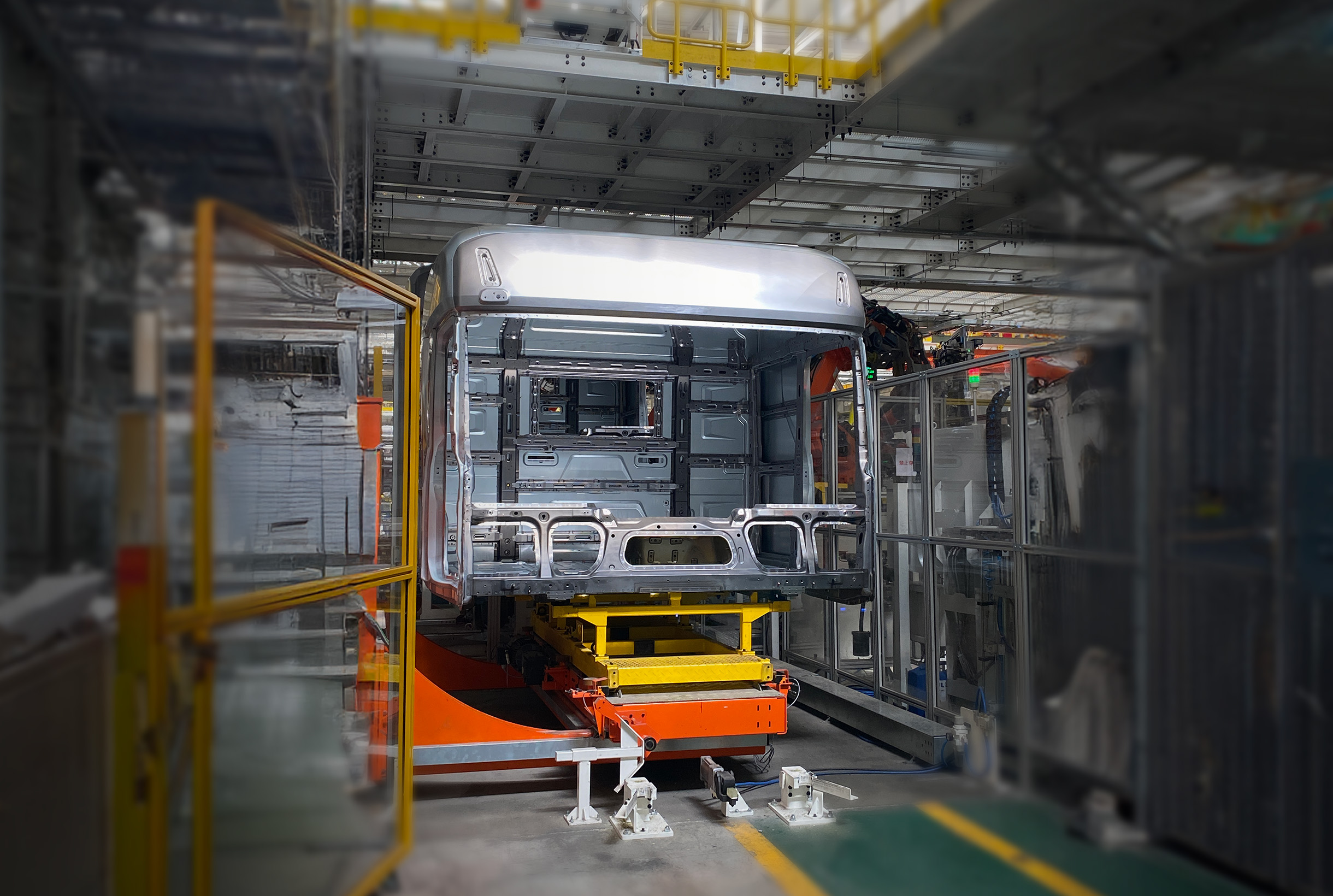Investing in Sustainable Production Technologies
China’s commercial vehicle sector is undergoing a rapid transformation, driven by accelerating digitalization, growing product diversity, and increasingly stringent environmental regulations. As a result, leading OEMs are investing heavily in advanced automation and sustainable production technologies to align with global trends and reinforce their competitive edge.
Amid this shift, the ability to scale production while maintaining high levels of flexibility and quality has become a defining metric – particularly for medium and heavy-duty truck manufacturers. Welding and body-in-white processes, once viewed primarily as efficient drivers, have emerged as key enablers of differentiation and long-term value creation.
Beijing Foton Daimler Automotive (BFDA), a joint venture between Foton Motor and Daimler Truck AG, is one of the front-runners in this evolution. With the launch of its A6 platform for premium heavy-duty trucks, BFDA is adopting a modular approach to accelerate time to market and product scalability.
As part of this transformation, BFDA has joined forces with Comau to develop a fully automated, highly flexible welding solution that redefines what’s possible in truck manufacturing.
The Challenge
Truck body welding has historically relied on manual operations and lacked standardization, making it difficult to ensure consistent quality at scale. As demand shifts toward increasingly customized configurations, manufacturers face growing structural and process complexity. This calls for smarter, more adaptable systems.
Heavy- and medium-duty applications
The BFDA A6 platform includes 18 base body types, spanning heavy- and medium-duty applications, covering the full range of Foton Auman vehicles. The platform also accommodates multiple widths, lengths, and heights, and continues to evolve with the market.
In addition to such complexity, BFDA required rapid ramp-up, installation within a limited footprint, and seamless integration into its existing operations – all within a compressed timeline.
The Solution
To meet these demands, Comau engineered a complete body-in-white welding solution that combines high automation with intelligent process coordination.
The system spans the main framing line, door lines, and all sub-assemblies – floor, side body inner/outer, roof, and rear body – delivering an end-to-end solution from simulation to deployment.

Robotics at a glance
The line utilizes 200 robots across 16 models, supported by advanced offline simulation to optimize cycle time and path accuracy. This enabled fast commissioning and reliable interoperability between robotic brands and applications.
Changeover between models in less than 40 seconds
Central to the system’s flexibility is Comau’s Robotic Framer. This solution uses modular grippers to accommodate a wide range of vehicle configurations, allowing changeover between models in less than 40 seconds. By combining lightweight tubular fixtures with NC-controlled electric actuators and flexible servo cylinders, the system achieves enhanced repeatability and fast clamping dynamics. Furthermore, servo-driven multi-switching units give the system added flexibility, improving both floor space usage and production responsiveness.
Quality assurance strategy
Comau also implemented a comprehensive quality assurance strategy. Inline monitoring with vision and force sensors ensures real-time control of critical processes such as adhesive dispensing (±0.2mm) and stud welding (±1.5mm), supporting consistent first-pass yield and minimizing rework.
In addition, Comau built a centralized control room (CCR) that integrates production operations and monitoring, supported by a visualized platform connected to MES, SAP, and Andon systems. This end-to-end setup enables seamless data collection and integration from shopfloor equipment to management systems.
Leveraging an industrial IoT platform, key information such as production status, process execution, and real-time alerts is centrally visualized and monitored, empowering intelligent decision-making.
The result is enhanced line efficiency, improved operational transparency, and a smart factory framework that is digital, flexible, and highly efficient.
The Results
The welding line is designed to produce up to 120,000 units annually, with a steady cycle time of 30 jobs per hour (JPH). It currently supports the production of 66 vehicle variants, with built-in scalability to support future expansion.
The system’s combination of automation, flexibility, and quality assurance provides BFDA with a powerful foundation for long-term competitiveness.
More broadly, the deployment reinforces Comau’s position as a leader in flexible welding solutions for commercial vehicles while helping BFDA advance its vision for intelligent, energy-efficient manufacturing in China’s evolving heavy-duty truck market.
K units
Annual production capacity
%
automated welding & material handling
models co-line production
>
0%
OEE

“China’s commercial vehicle industry moves toward smarter, more diversified manufacturing, flexibility is nothing short of essential. This collaboration reflects Comau’s long-term commitment to the Chinese market and our ability to deliver high-value, future-ready solutions that help customers like BFDA stay ahead of complexity, improve responsiveness, and drive their competitive growth.”
Jeff Yuan
Comau APAC Leader


